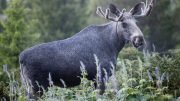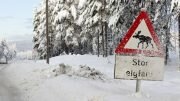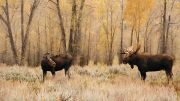Hot and dry weather means that more elk calves are dying, while those who survive become smaller, Swedish research shows.
The trend is particularly clear in Svealand and Götaland, according to a survey conducted by the Swedish University of Agricultural Sciences in Umeå, reported by Swedish Radio Ekot.
The newborn elk calves feed off their mothers in May and June.
If it is extra hot and dry at the time, it results in nutrient-poor food and more stress for the elk mother, which does not manage to produce enough milk.
“The elk is adapted to the cold and does not thrive in warm temperatures. It gets less energy for everything else, for example, to produce milk,” one of the researchers behind the study, Fredrik Widemo, noted.
Average weight
Researchers have analyzed the calves’ carcass weight during the hunting period over the past 20 years.
In Svealand and Götaland, the average weight decreased by 10 kilos.
The average weight also decreased in Norrland, but somewhat less.
In some places in the southern United States, the elk has completely disappeared, Widemo pointed out.
He fears that Southern Sweden may eventually have a smaller elk population.
© NTB Scanpix / #Norway Today




Be the first to comment on "Warmer climate is making elk calves smaller and weaker"